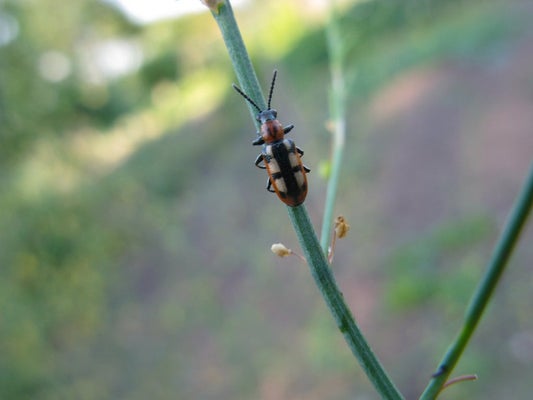Chemical labels explained
The labels on garden chemicals provide important information on when, where and how to use that product. Our handy guide helps you decipher this information so you can be sure to use them as safely as possible.

Common name - Asparagus beetle
Scientific name - Crioceris asparagi
Plants affected - Vegetable asparagus, but not ornamental Asparagus species
Main symptoms - Presence of adult beetles and grubs. Foliage is eaten and may dry up and turn brown
Most active - May-September
Asparagus beetle is one of about 250 species of leaf beetle (family Chrysomelidae) found in Britain, they range in size from 1 mm to 18 mm. The family contains many metallic and attractive species and all feed on plants (herbivores).
Both the colourful adult and grey larval stages of asparagus beetle eat the foliage of asparagus, they can also gnaw from stems, causing growth above the point of damage to dry up.
